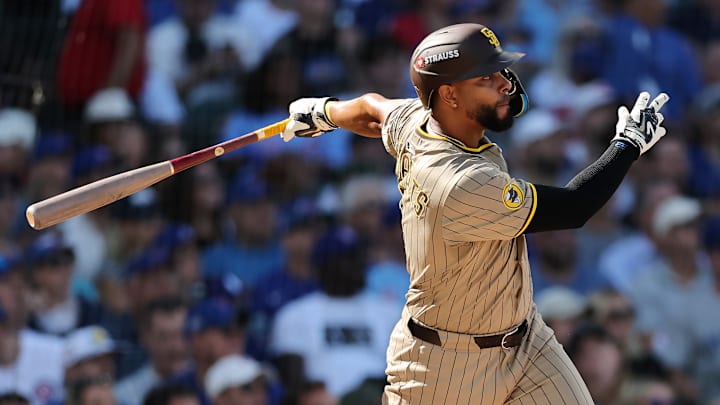October baseball always collapses a whole season into a handful of pitches. Every borderline call feels like a referendum, every near-miss a fork in the road your franchise might never see again. For the Padres, Game 3 in Chicago turned on one of those razor-edge moments — a low fastball that lived outside the zone and still got wrung up. That snap of the wrist didn’t just record an out; it redirected the entire inning, and with it, the Padres’ season.
Zoom in on the sequence and you can feel the air shift. Jackson Merrill had just ambushed Brad Keller for a solo home run, injecting oxygen into a dugout that believed. Then came Xander Bogaerts with a full count, Keller yanking a heater below the knees that Cubs catcher Carson Kelly stuck and sold. Strike three. Not a borderline coin flip — a pitch that lived beneath the line. In the space where a walk should have lived, the inning received its first out. Keller promptly lost the zone, plunking the next two hitters. Sliding-doors baseball: if Bogaerts reaches, the Padres are staring at bases loaded, nobody out, pressure maxed. Instead, the call bails Chicago out of the first crack in the dam, and the comeback window slams.
Padres loss to Cubs raises the case for MLB’s automated ball-strike system
This is precisely the gray area Major League Baseball is closing in 2026 with the Automated Ball-Strike (ABS) Challenge System. The league approved the challenge format for full-season use beginning next year: human umpires still make the initial call, but players can immediately challenge — a quick check against the computer-tracked zone to correct misses without stopping the game’s heartbeat. The Joint Competition Committee’s vote locked it in for 2026, a direct response to moments like this when one miss can flip a series.
Mechanically, it’s simple by design: each team starts with two challenges per game and keeps a challenge if it’s successful; extra-inning provisions add flexibility. Only the pitcher, catcher, or batter can initiate, and rulings arrive in seconds, often posted on the videoboard so everyone sees what the tech saw.
BRUTAL strike three call on Xander Bogaerts would've been ball four pic.twitter.com/h7aiAqNleN
— Jomboy Media (@JomboyMedia) October 3, 2025
That balance matters. The ABS challenge model doesn’t erase the craft of catching or the intuition of a good plate umpire; it just fences off the edges so the strike zone isn’t a moving target in the ninth inning of an elimination game. Catchers can still present; pitchers can still try to nip corners; hitters still have to decide in a blink. The difference is that when a pitch lives clearly off the plate, the exact kind of low fastball that erased Bogaerts — the players on the field can fix it in real time. MLB’s own announcement made it clear this was the compromise players and clubs favored: preserve the human rhythm, add a safety net when it matters most.
Run the Padres’ sequence back through that lens. Merrill’s homer stands. Bogaerts taps his helmet, wins the challenge, and takes first. With Keller already unraveling, two HBPs followed — you’re looking at a bases-loaded, nobody-out scenario in a one-run game. Nothing is guaranteed in October; maybe Chicago still wriggles out of it, maybe San Diego cashes in. But that’s the point. The inning should be decided by swings, pitches, and execution — not by a called strike on a ball below the zone.
In 2026, that kind of ending becomes less likely. The Padres’ loss doesn’t get un-written, and the heartbreak won’t fade quickly, but the sport is taking a necessary step so the biggest games hinge on the right things. Keep the umpires, keep the drama, keep the tension — just make sure the zone is the zone when everything is on the line. The challenge system won’t make October painless; it will make it fairer. And that’s a win baseball, and Padres fans, can live with.
